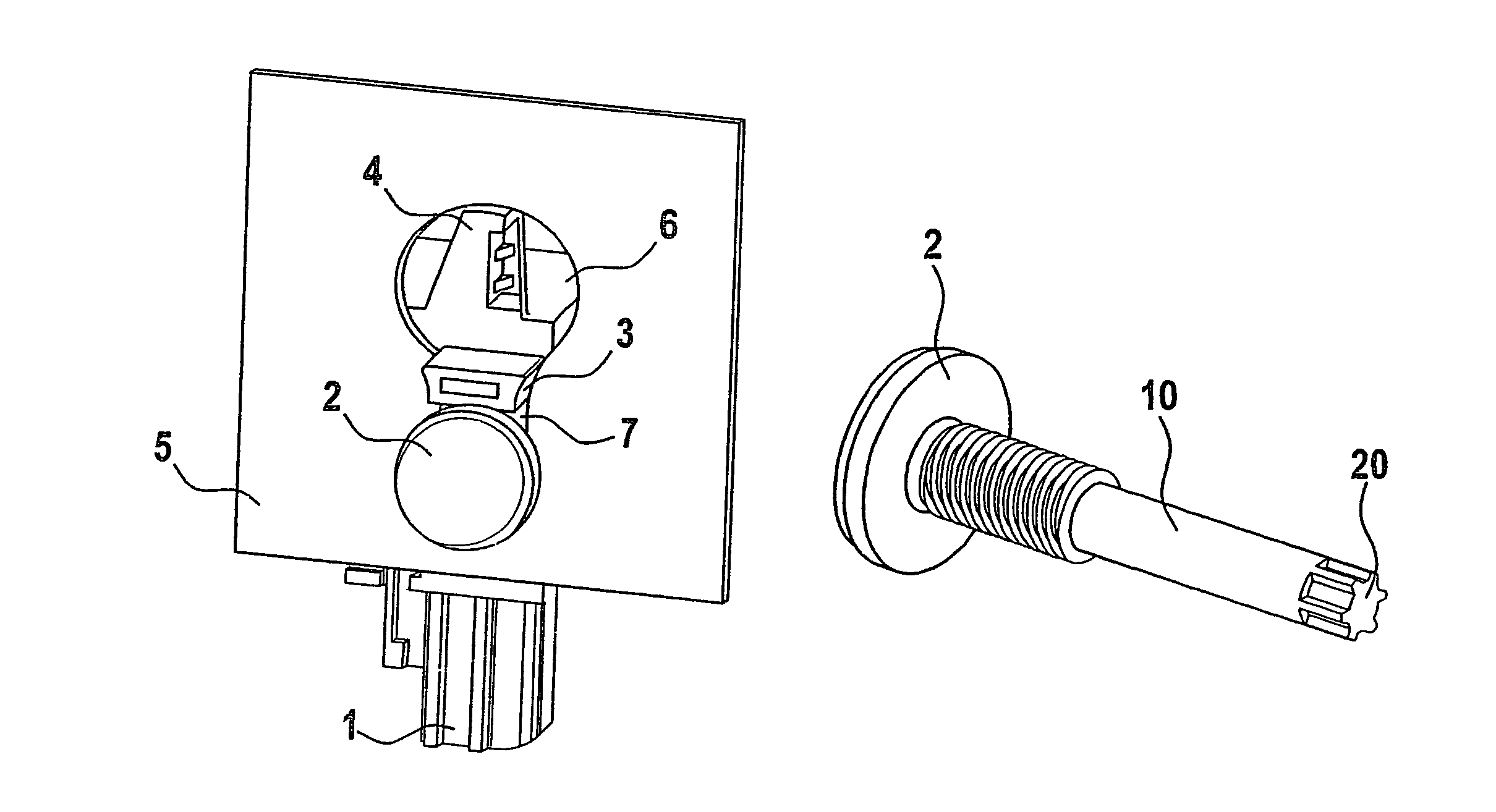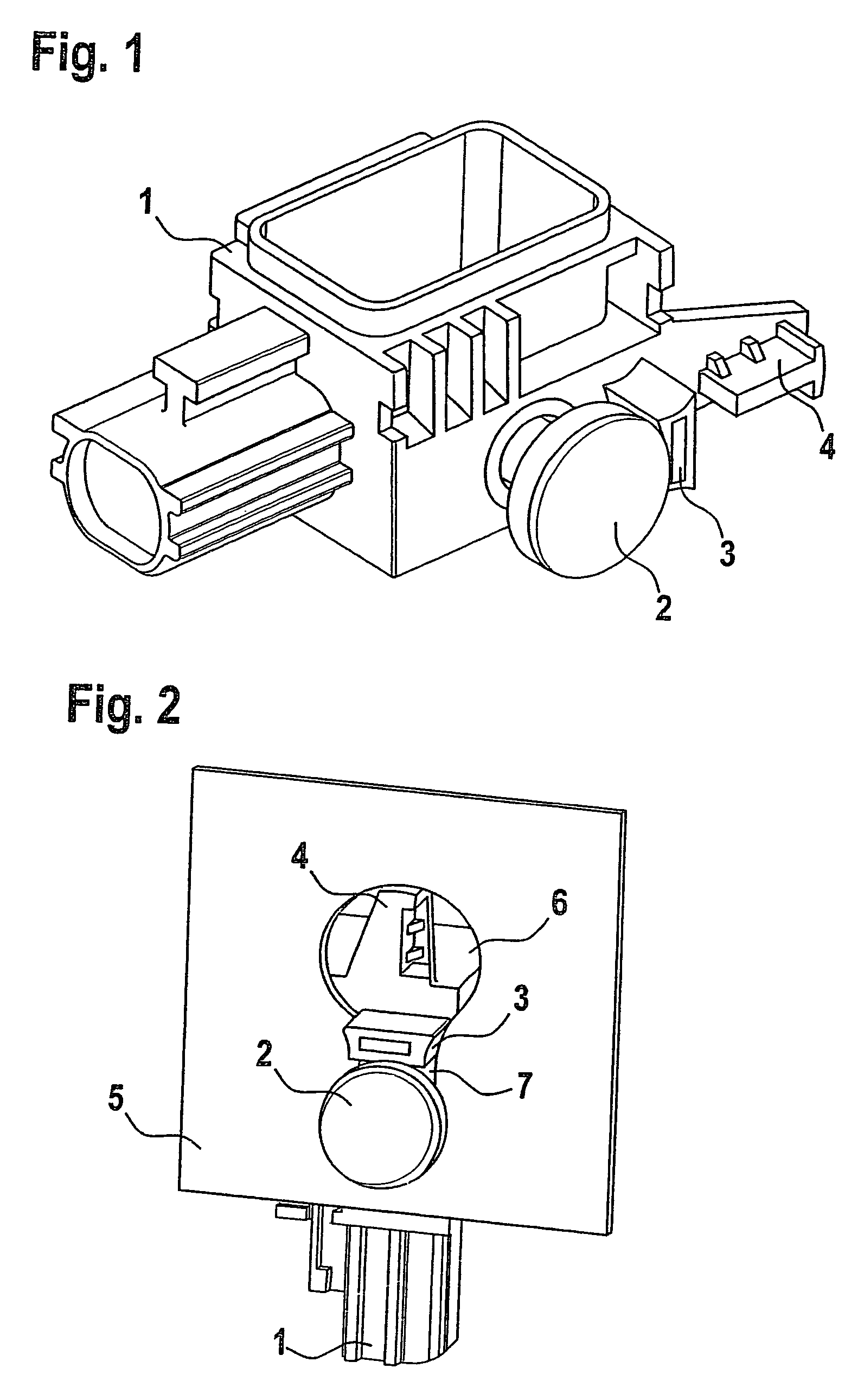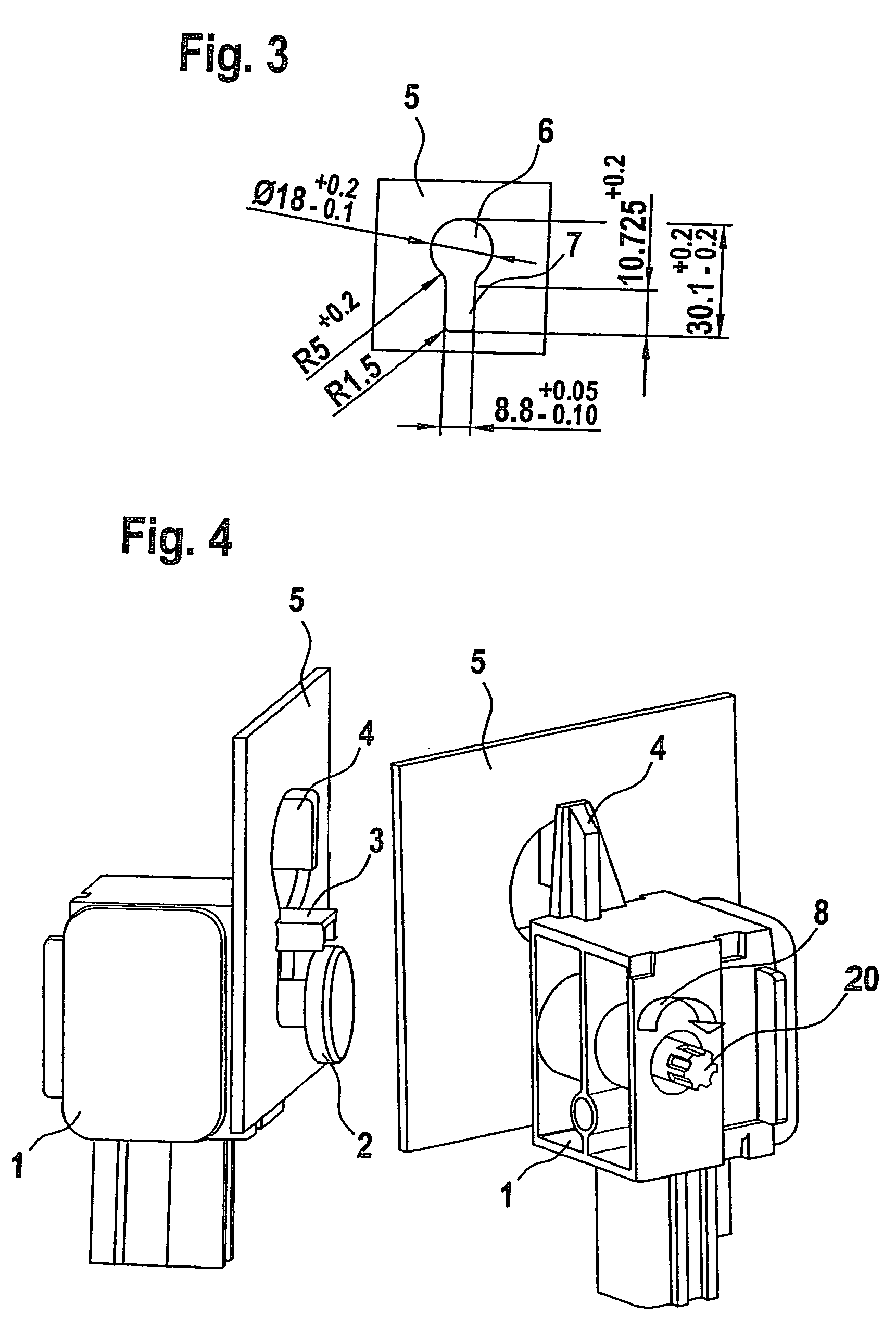Fastening assembly
a technology of fastening and assembly, which is applied in the direction of threaded fasteners, screwing, pedestrian/occupant safety arrangements, etc., can solve the problems of saving material and hence costs, and achieve the effects of saving material, reducing work steps, and simplifying bolts
- Summary
- Abstract
- Description
- Claims
- Application Information
AI Technical Summary
Benefits of technology
Problems solved by technology
Method used
Image
Examples
Embodiment Construction
[0015]In the automotive industry, components, particularly sensors, for restraining systems for example, are fastened to the vehicle in various ways. Apart from screwing the component to a nut welded into the vehicle body or screwing the component via a hole in the vehicle body into a threaded bushing of the component using a bolt, the keyhole principle is increasingly used for fastening housings. For this purpose, bolts, preassembled and held in place by self-locking in a housing of the component to be mounted, are guided head first into the larger part of a keyhole-like cut-out in the vehicle body and are then hooked into the lower, narrower part, i.e. a further opening of the keyhole. The bolt is then tightened and the component thereby clamped.
[0016]In contrast to the two other methods mentioned above, the keyhole principle has the advantage that on the one hand no nut needs to be welded into or otherwise preinstalled in the vehicle, which represents a significant cost advantage...
PUM
 Login to View More
Login to View More Abstract
Description
Claims
Application Information
 Login to View More
Login to View More - R&D
- Intellectual Property
- Life Sciences
- Materials
- Tech Scout
- Unparalleled Data Quality
- Higher Quality Content
- 60% Fewer Hallucinations
Browse by: Latest US Patents, China's latest patents, Technical Efficacy Thesaurus, Application Domain, Technology Topic, Popular Technical Reports.
© 2025 PatSnap. All rights reserved.Legal|Privacy policy|Modern Slavery Act Transparency Statement|Sitemap|About US| Contact US: help@patsnap.com



